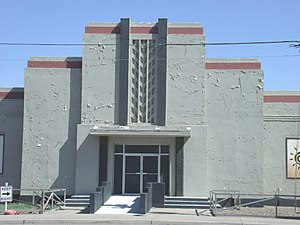
The Century 21 Exposition was a world's fair held April 21, 1962, to October 21, 1962, in Seattle, Washington, United States. Nearly 10 million people attended the fair during its six-month run.
The Colosseum is an elliptical amphitheater in Rome, Italy.

The California State Mining and Mineral Museum exhibits and interprets the state's mineral resources and mining heritage. It is part of the California state park system, and is located near Mariposa, a town in central California, on the premises of the Mariposa County fairgrounds.
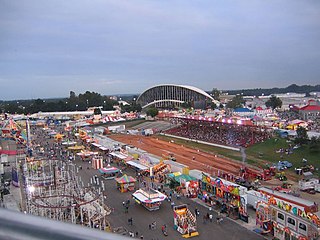
The North Carolina State Fair is an American state fair and agricultural exposition held annually in Raleigh, North Carolina. Founded in 1853, the fair is organized by the North Carolina Department of Agriculture and Consumer Services. It attracts around a million visitors over eleven days in mid-October.

Arizona Veterans Memorial Coliseum, also called the Madhouse Coliseum or Phoenix Memorial Coliseum, is a 14,870-seat multi-purpose indoor arena in Phoenix, Arizona, United States, located at the Arizona State Fairgrounds. It hosted the Phoenix Suns of the National Basketball Association from 1968 to 1992, as well as indoor soccer, professional roller hockey, multiple professional minor league ice hockey teams, and roller derby.

Tingley Coliseum is an 11,571-seat multi-purpose arena in Albuquerque, New Mexico. Originally built as a rodeo and horse show auditorium, it is located at 300 San Pedro Drive N.E.
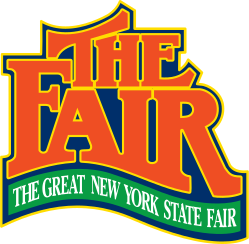
The New York State Fair, also known as the Great New York State Fair, is a 13-day showcase of agriculture, entertainment, education, and technology. With midway rides, concessionaires, exhibits, and concerts, it has become New York's largest annual event and an end-of-summer tradition for hundreds of thousands of families from all corners of the state. The first fair took place in Syracuse in 1841, and took permanent residence there in 1890. It is the oldest and one of the largest state fairs in the United States, with over one million visitors annually.

The Ohio Expo Center and State Fairgrounds is an exhibition center and fairground site, located in Columbus, Ohio. The site has been home to the Ohio State Fair since 1886.
The Empire Expo Center is an exhibition ground located in Geddes, a suburb of Syracuse, New York. It features eight exhibition halls and 375 acres (1.52 km2) of ground space, which are used year-round for exhibitions and trade fairs.

The Oregon State Fair is the official state fair of the U.S. state of Oregon. It takes place every August–September at the 185-acre (0.75 km2) Oregon State Fairgrounds located in north Salem, the state capital, as it has almost every year since 1862. In 2006, responsibility for running the fair was delegated to the Oregon State Parks and Recreation Department, and the division is now known as the Oregon State Fair & Exposition Center (OSFEC), which holds events on the fairgrounds year-round.

The Big Fresno Fair, founded in 1884, is an annual fair held at the Fresno County Fairgrounds. The Big Fresno Fair is managed by the 21st District Agricultural Association, an entity of the California Department of Food and Agriculture Division of Fairs & Expositions. It is the largest annual event in the San Joaquin Valley, attracting around 600,000 people each October during its twelve-day run featuring exhibits, a livestock show, live horse racing, musical entertainment, educational programs and more. The Fair provides a link between urban and rural California, serving as a tool to educate visitors on the region's rich agricultural industry. The mission of The Big Fresno Fair is to "Educate, Celebrate and Have Fun".

The Arizona State Fair is an annual state fair, held at Arizona State Fairgrounds.
The Maricopa County Fair is annually held in Phoenix, Arizona at the Arizona State Fairgrounds. It began in the 1950s as a county fair and citrus festival.
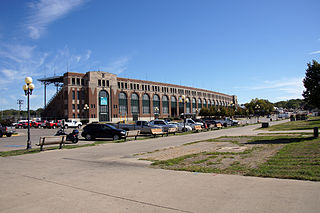
The Iowa State Fairgrounds is located on the east side of Des Moines, Iowa, United States. It annually hosts the Iowa State Fair in late summer. The state fair was begun in Iowa in 1854 and the current fairgrounds were established in 1886. The fairgrounds were listed as a historic district on the National Register of Historic Places in 1987 as the Iowa State Fair and Exposition Grounds.
The Arizona Mining and Mineral Museum in Phoenix, Arizona, was a museum focused on minerals and mining. Last operated by the Arizona Historical Society, a state government agency, its exhibits included more than 3,000 minerals, rocks, fossils, and artifacts related to the mining industry. The museum closed in May 2011. In April 2017, legislation was passed to reopen the museum under the ownership of the University of Arizona.

Grand Forks County Fairgrounds WPA Structures is a collection of five structures within the Grand Forks County Fairgrounds in Grand Forks, North Dakota, that were listed on the National Register of Historic Places in 2009.
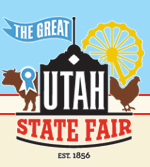
The Utah State Fair is held at the Utah State Fairpark in Salt Lake City, Utah, United States. The fairgrounds are listed on the National Register of Historic Places. The fair takes place each year starting on the first Thursday after Labor Day and lasts for 11 days.

Edward Fairfax Neild Sr., was an American architect originally from Shreveport, Louisiana. He designed the Harry S. Truman Presidential Library and Museum in Independence, Missouri. He was selected for the task by U.S. President Harry Truman.
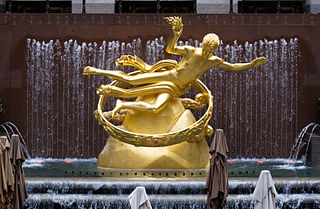
The Art Deco style, which originated in France just before World War I, had an important impact on architecture and design in the United States in the 1920s and 1930s. The most notable examples are the skyscrapers of New York City, including the Empire State Building, Chrysler Building, and Rockefeller Center. It combined modern aesthetics, fine craftsmanship, and expensive materials, and became the symbol of luxury and modernity. While rarely used in residences, it was frequently used for office buildings, government buildings, train stations, movie theaters, diners and department stores. It also was frequently used in furniture, and in the design of automobiles, ocean liners, and everyday objects such as toasters and radio sets.







